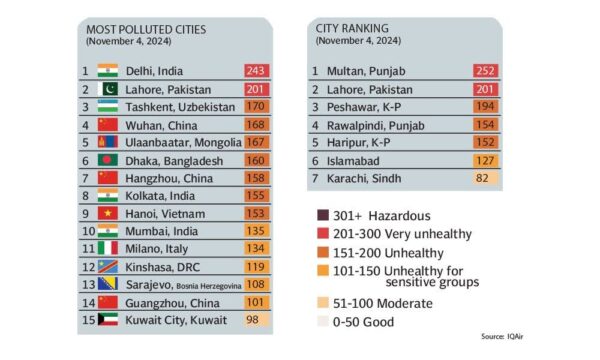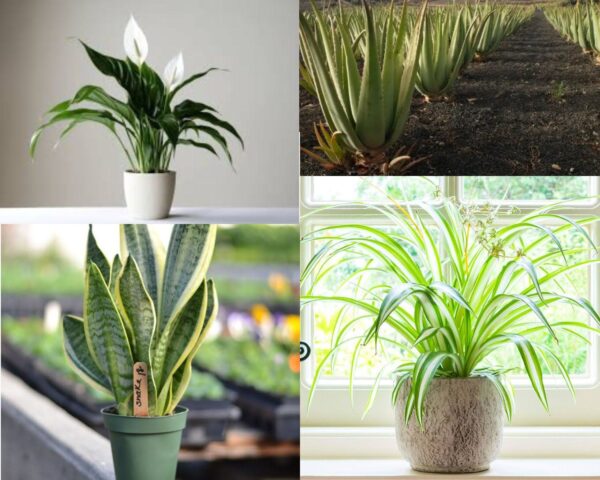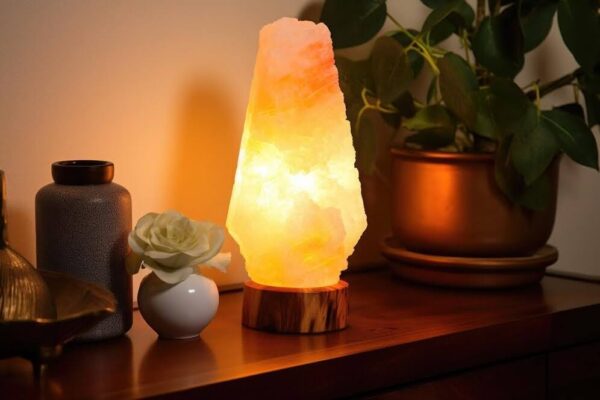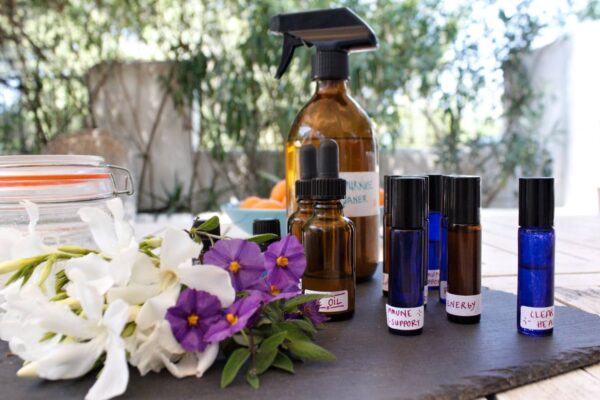
As winter approaches, Punjab, Pakistan, once again finds itself enveloped in a thick blanket of smog a combination of fog and pollution that has become an unfortunate seasonal reality. The declining air quality poses serious health risks, particularly for those with respiratory conditions, children, and the elderly. In cities like Lahore, where the Air Quality Index (AQI) regularly soars to hazardous levels, it’s essential to take preventive steps to protect yourself from the adverse effects of smog.
Here’s an in-depth look at the current smog situation in Punjab and some natural strategies to safeguard your health and improve indoor air quality.
The Smog Crisis: A Growing Concern
Punjab’s smog problem is largely due to crop burning, vehicle emissions, industrial pollution, and seasonal weather patterns. The cooler temperatures trap pollutants closer to the ground, creating a toxic mix that impacts visibility and air quality. This smog contains harmful particles and gases like sulfur dioxide, nitrogen dioxide, and particulate matter (PM2.5), which can penetrate the lungs and cause serious health issues.
Given the severity of the situation, residents must adopt protective measures, especially in urban areas with high pollution concentrations.

Natural Ways to Protect Against Poor Air Quality
1. Indoor Plants for Air Purification
Certain plants can help purify indoor air by absorbing pollutants and releasing clean oxygen. While they may not entirely counteract the impact of heavy smog, they contribute to a healthier indoor environment. Here are some effective air-purifying plants:
- Snake Plant (Sansevieria): Known for absorbing toxins like formaldehyde and nitrogen oxide.
- Aloe Vera: This plant can help reduce pollutants and requires minimal sunlight, making it ideal for indoor use.
- Spider Plant (Chlorophytum comosum): Absorbs carbon monoxide, benzene, and xylene effectively.
- Peace Lily (Spathiphyllum): This beautiful plant helps filter indoor air, removing ammonia, benzene, and formaldehyde.
Placing a few of these plants around your home can aid in maintaining cleaner air during high-smog days.

2. Stay Indoors and Limit Outdoor Activities
When the AQI is high, it’s best to stay indoors as much as possible, especially during peak smog hours in the morning and evening. Avoid outdoor physical activities, as vigorous exercise increases the breathing rate and, consequently, the inhalation of pollutants.
3. Keep Windows Closed
Although natural ventilation is typically beneficial, during smoggy days, it’s better to keep windows and doors closed to prevent polluted outdoor air from entering. Seal any drafts around windows and doors to minimize air leakage, and use exhaust fans to maintain indoor airflow without drawing in outside air.

4. Use Himalayan Salt Lamps for Air Purification
Himalayan salt lamps are a popular choice for natural air purification. These lamps are made from blocks of pink Himalayan salt, which is believed to attract and trap pollutants and moisture. When heated by a light bulb, they release a warm, amber glow, creating a calming atmosphere that promotes relaxation. While scientific evidence on the effectiveness of salt lamps as air purifiers is limited, they are thought to:
- Absorb water molecules from the air, potentially trapping pollutants.
- Release negative ions, which some believe can counteract airborne pollutants.
Salt lamps can also add a cozy aesthetic to your home, making them a pleasant addition to your indoor environment.
Read More Here: Why have Himalayan Bowl Salt Lamps in your home?
5. Essential Oils for Natural Air Freshening
Diffusing essential oils like eucalyptus, peppermint, and tea tree oil can provide temporary relief from respiratory symptoms by helping to clear nasal passages. Eucalyptus oil, in particular, has anti-inflammatory properties that may be beneficial during smog-heavy days. Additionally, these oils can add a fresh scent to the air, making the indoor environment feel cleaner.

6. Stay Hydrated and Maintain a Healthy Diet
Drinking plenty of water helps your body expel toxins and stay hydrated, which is essential when pollution levels are high. A diet rich in antioxidants found in foods like berries, nuts, and leafy greens can support your body’s natural defenses against pollution-related oxidative stress.

7. Maintain a Clean Indoor Environment
Regularly dusting and vacuuming your home can help reduce the amount of indoor pollutants. Dust, mold, and other allergens accumulate over time, especially when windows remain closed. Use a vacuum cleaner with a High-efficiency particulate air (HEPA) filter to capture fine particles and prevent them from re-circulating in the air. You can also invest in an air purifier with a HEPA filter to capture pollutants more effectively indoors.
Looking Ahead: The Importance of Long-Term Solutions
While individual actions can help mitigate the impact of smog in the short term, long-term changes are essential for a sustainable solution to Punjab’s air quality crisis. Reducing reliance on fossil fuels, adopting clean energy, enforcing stricter industrial regulations, and increasing green spaces are critical steps that need government and community support.
Conclusion
As the smog season settles over Punjab, it’s crucial to protect yourself and your loved ones from the effects of poor air quality. From staying indoors to using air purifiers like plants and natural salt lamps, there are several ways to create a healthier indoor environment. By incorporating these practices, you can reduce your exposure to harmful pollutants and enjoy a safer, cleaner home. Remember, protecting yourself from smog isn’t just about addressing the immediate impact. it’s about taking proactive steps toward better respiratory health and overall well-being.

